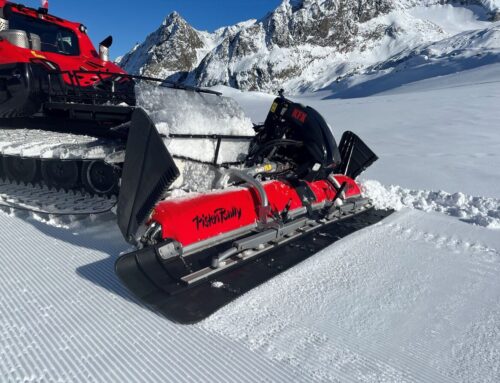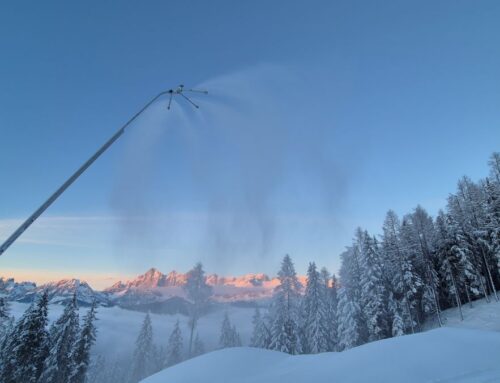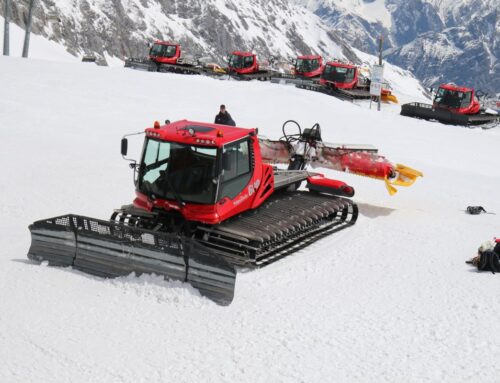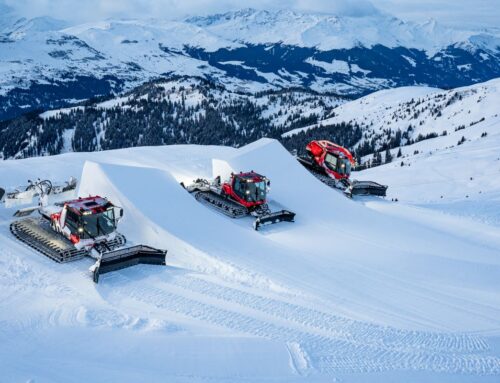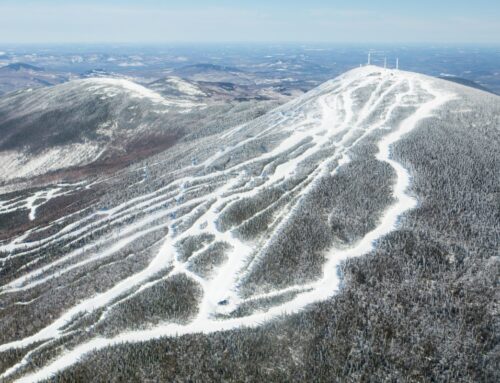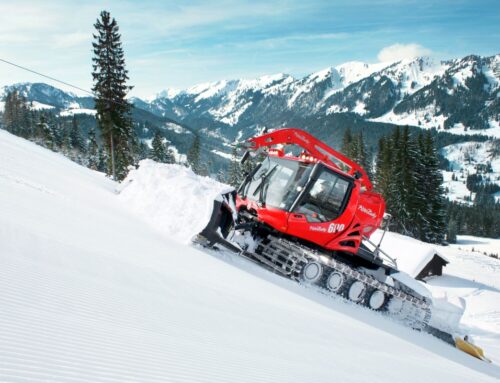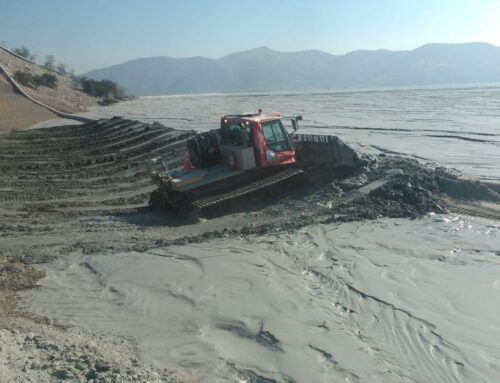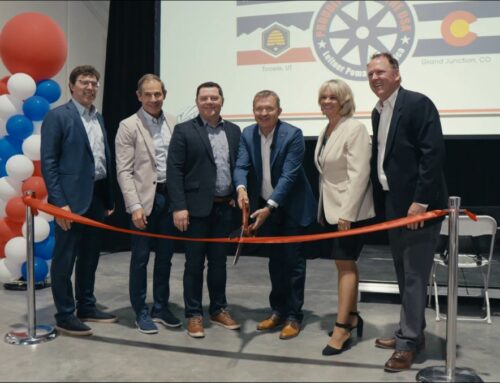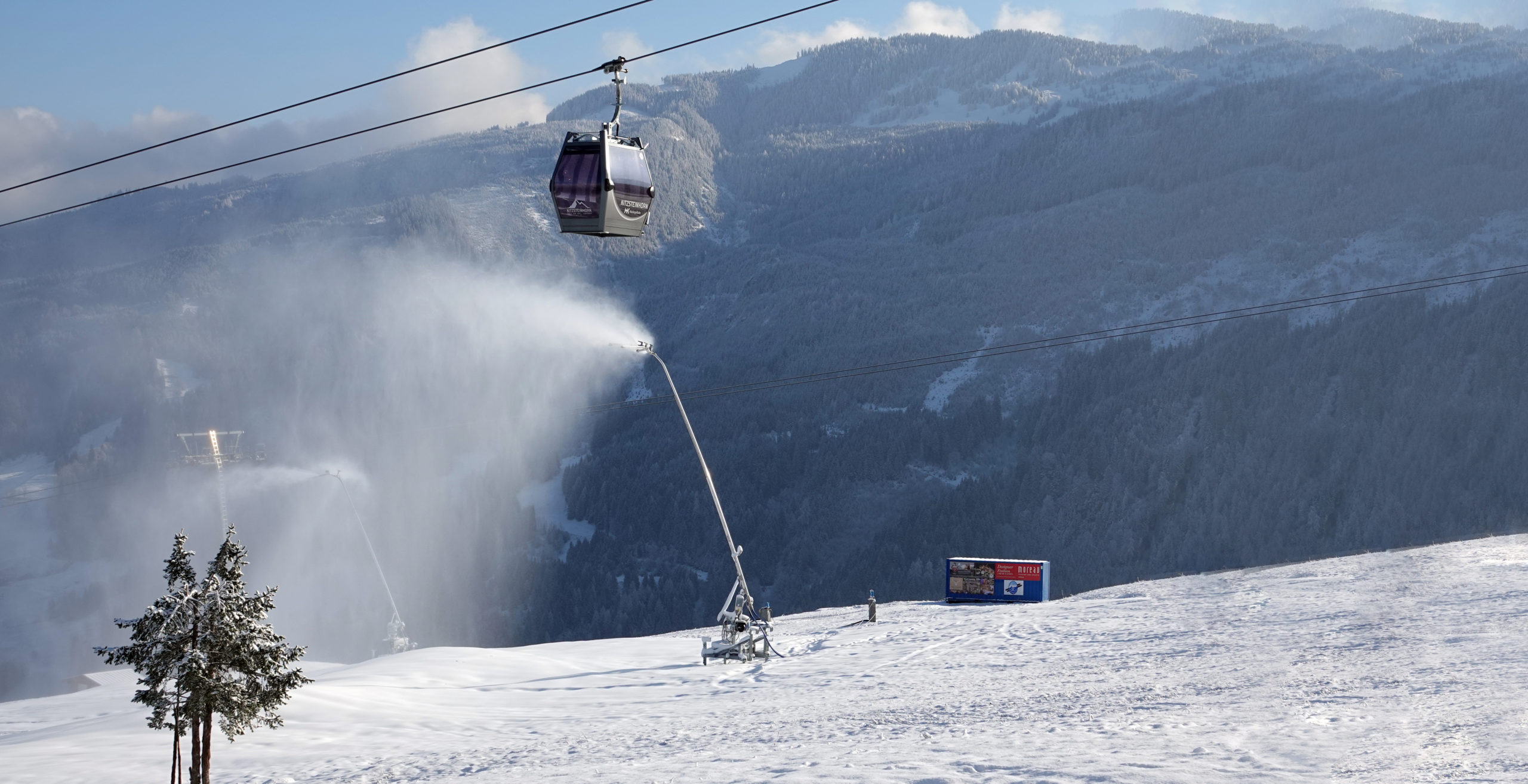
SI World 2/2021, Snowmaking & Slope Maintenance
Bächler – The snow lance specialist: The positive reduction from 2,900 to 150
For over 35 years at BÄCHLER TOP TRACK AG, it has only ever been about snow lances – and for good reason. The advantages of the lance technology were clear even back in the 80s, when A.R. Bächler imported HKD snow lances from overseas and entered the market for technical snowmaking – as an additional pillar alongside slope and track preparation.
At that time, BÄCHLER was already able to score points with its slightly lower energy consumption. Drawbacks were still evident in snow production volume and casting distance, but development was just beginning.
Historical comparison
A brief look back at the history: At that time, a HKD snow lance used around 2,900 litres compressed air per minute. The latest BÄCHLER models require just 150 litres per minute – even since the introduction of the NESSy technology.
The additional power for a single-head lance fell from 15 kW to just 1.5 kW. When it came to air consumption – and associated energy demand – the lance performed very well in comparison with the fan gun machines. However, it was not yet possible to resolve the higher water flow rate.
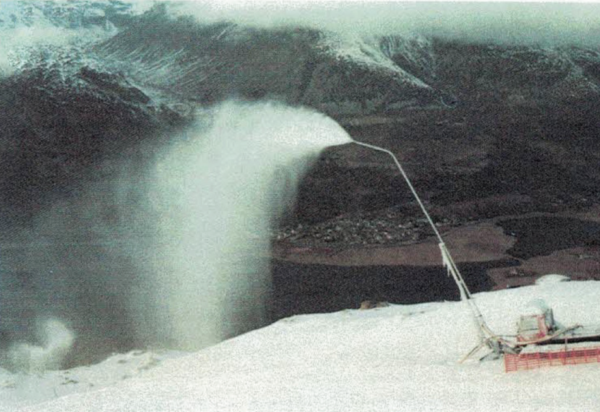
The HKD snow lance in the mid-80s used around 2,900 litres compressed air per minute.
NESSy and SnoTek make big changes
The SnoTek technology from BÄCHLER brought – and continues to bring – a true leap forward in technology. The single and multi-head lance designs are all based on the revolutionary NESSy technology and, in the upper output range, complemented by the SnoTek V-Jet-Nozzle blocks.
A water flow rate like that of fan gun snowmakers can therefore be achieved and sometimes even surpassed. There have also be strong gains in casting distance. In air and energy consumption, by contrast, nothing has changed; the 150 litres per minute and 1.5 kW additional power for a single head still remain.
The focus is what makes the difference
It is also thanks to BÄCHLER that the lance technology has seen such great changes in performance in recent years. The belief in and focus exclusively on this technology send a clear signal.
In the past, it was the fan gun machines that were complemented by the snow lances; today, it is often the other way around. With modern surface snowmaking systems, the fan gun snowmakers are often regarded as an additional element for specific locations, as the lance technology does not always make sense there.
In the past, it was the fan gun machines that were complemented by the snow lances; today, it is often the other way around.
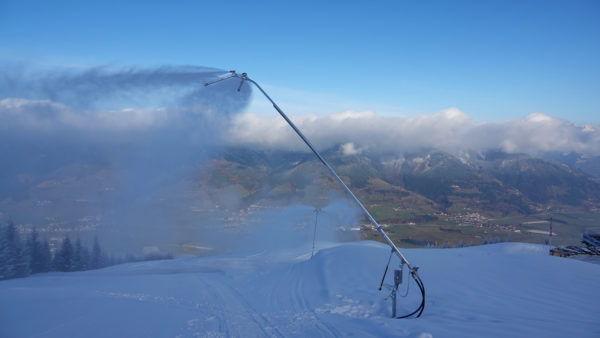
Confirmed in practice
Today, even higher-altitude ski resorts no longer want to be without the high snow output. The advantage of the multi-level design – for example with a SnoTek MEDUSA that has eight snow levels – demonstrates that even greater output is available at lower temperatures, despite an early start to the snow.
That is why many BÄCHLER customer choose the Swiss snow system. The low maintenance of the lance technology represents an additional advantage.
Critical range
For snowmaking, the marginal temperature can certainly be described as a critical range. Indeed, prolonged sub-zero temperatures have become a rare asset in ski resorts and there is absolutely no change of trend in sight. With the SnoTek TRIDUSA launched in 2017, BÄCHLER has therefore become a specialist in the range from a wet-bulb temperature (WBT) of -1.5°C.
BÄCHLER confirms: With the three- head lance, at the first level, it is possible to achieve up to 21 cubic metres of snow per hour at an ambient temperature from -1.5°C WBT. From -6°C WBT, at the second level, the SnoTek TRIDUSA actually achieves 67 cubic metres per hour.
The Swiss lance specialists see the positive feedback from the field as full affirmation – whether for surface snowmaking in combination or even for depot snowmaking.
Figures confirm the feeling
The snowmaking industry has always known and now the data confirm: the temperature range of a wet-bulb temperature from -2.5 to -6°C accounts for 75 percent of all production hours in technical snowmaking.
This proportion makes up well over 60 percent of the annual volume of snow production. In the future, efficiency in the temperature marginal range will therefore contribute significantly to the success of a winter sports region.
In view of the global trend, the prognosis is clear that this range will continue to move in the direction of -1.5°C WBT.
Since the first in-house development in 2000, BÄCHLER has practised the principle of maximum efficiency for all snow lance. The earliest possible start to the snow, optimised snow outputs and overall efficiency in respect of the resources used were paramount then and remain so today.
In the future too, BÄCHLER snow lances should stand out for their simple function and versatility; the fewer components and moving elements there are, the lower their vulnerability in operation.
Development continues
BÄCHLER can see great future potential in effective, energy-efficient snowmaking that is no longer visible when the work is finished. Today, in many places, with enough build-up after the base layer of snow, the BÄCHLER lances are already removed and put away for the entire season.
This not only improves safety on the pistes but also allows an undisturbed view of the mountain landscape. BÄCHLER hopes to make this process significantly easier, and the foundation for this has already been laid with the screwless quick-change system for the snow heads.
According to the Swiss snowmaking specialist, however, this is only one small part of a system that will become even more sophisticated in the future. ts
